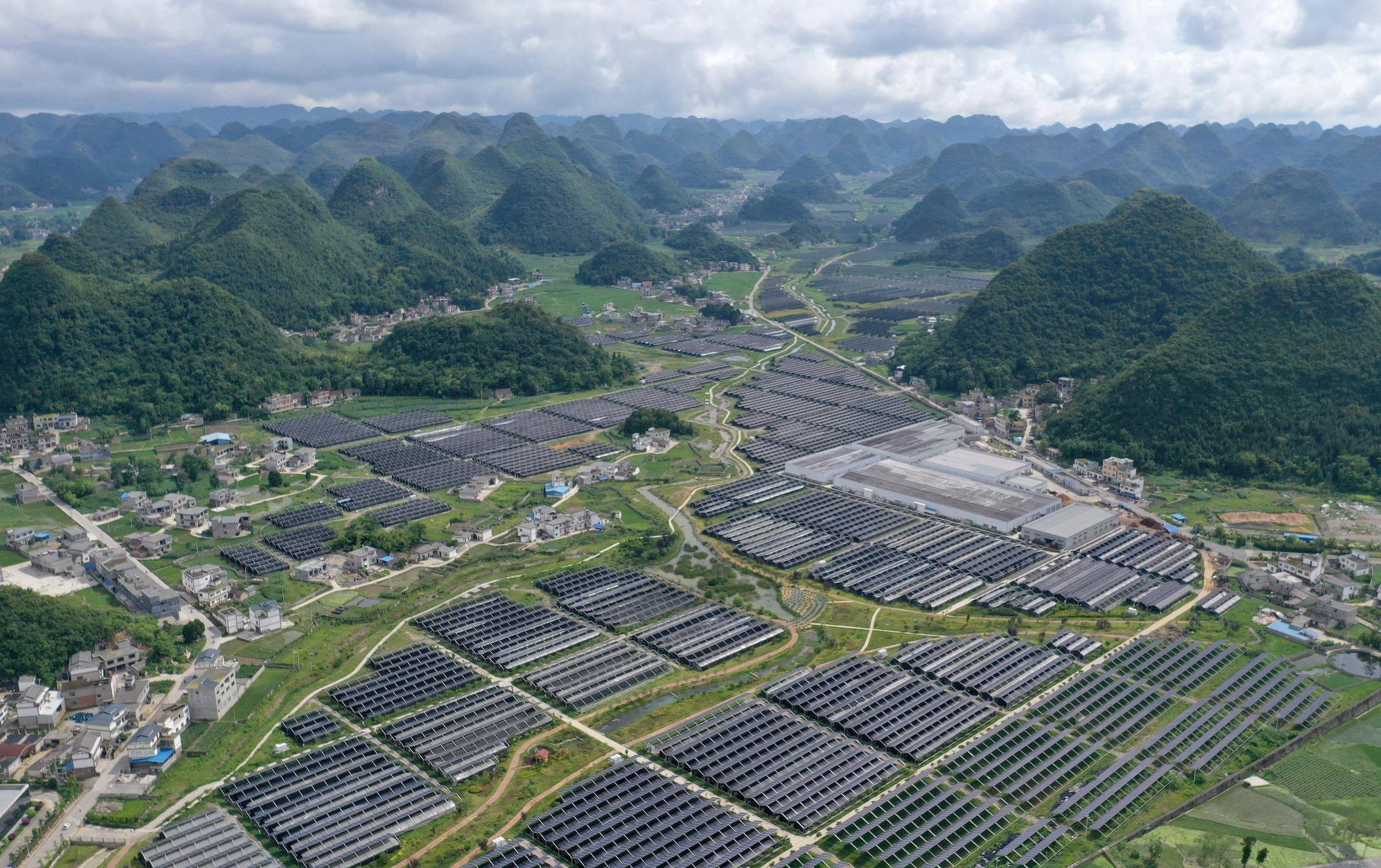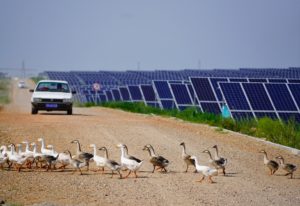China has embarked on an ambitious quest to cap carbon emissions by 2030 and to achieve carbon neutrality by 2060. As a result, the need for energy transition and to absorb more non-fossil “clean energy”, which includes nuclear, hydro and renewable energy in a more liberalised and integrated power market has become a pressing issue for the power sector.
China’s Renewable Energy Law mandates grid companies to purchase all power produced by renewable sources in their jurisdiction. In practice, the electricity generated by solar and wind farms is mainly cleared through two channels: guaranteed purchases and market-based trading. Grid companies will purchase 100% of the guaranteed amount from renewable sources based on a benchmark tariff. The rest of the power will be sold on the market through power purchase contracts. A 2019 policy jointly issued by the National Development and Reform Commission (NDRC) and the National Energy Administration (NEA) further tasks provinces to increase renewable energy penetration through a quota system. Under this scheme grid companies, distributors and corporate end-users are all responsible for increasing renewable energy consumption.
Clean energy in the Southern Grid region
China Southern Power Grid (“Southern Grid”) is one of China’s two major state-owned power distributors that serve five southern provinces: Guangdong, Guangxi, Yunnan, Guizhou and Hainan. The region has witnessed a rapid build-up of power generation capacity, from 275 GW in 2015 to 350 GW in 2020. Within this capacity, 189 GW, or 54%, is non-fossil clean energy. In contrast to the 8.8% annual growth rate of clean energy installations over the past five years, the annual growth of new coal power installation has slowed down to 1.4% in the same period. Among the clean energy sources, solar and wind are seeing the fastest growth, with a 36% average annual growth rate for solar installations and 14.5% for wind.
Southern Grid has to work within the context of significant clean energy expansion inside the five-province region to fulfill its mandate of increasing clean energy consumption and minimise curtailment.
Provincial differences in energy structure complicate the task. Within the region, Guangdong province, the most advanced economy among the five, is also the most heavily reliant on coal. A total of 66% of its installed capacity is generated from coal. Yunnan province, on the other hand, has 80% of its generation capacity in hydro. The stark difference in the energy make-up means different provincial patterns and strategies for clean energy consumption.
Both the plan-based guaranteed purchases and market-based trading work in parallel to ensure the highest utilisation of clean energy in the region. Geographically, clean energy generated within a given province is prioritised for consumption within the same province first, with the rest distributed to other provinces.
Guangdong’s relatively low level of clean energy means that most of it is consumed within its own border through priority planned generation and guaranteed purchases by Southern Grid at a government-designated price. As Guangdong expands the scale of electricity trading through its power market, a portion of electricity generated by its nuclear power plants has entered market competition, selling directly to end-users on a contractual basis.
In Guangxi, all the wind and solar power is taken by the grid through guaranteed purchases but its hydropower stations are getting access to the grid through a “generation rights trading” mechanism, where they buy their generation quota from other power plants, mostly coal-fired ones. “Generation rights trading” is a transitional mechanism that partially liberalises the rigid plan-based system wherein power plants are allocated fixed quotas of power generation (in terms of generation hours) by the authorities. Almost all of Guangxi’s nuclear power generation, on the other hand, is traded on the market.
In Yunnan province, where clean energy dominates, almost all its hydropower must compete for customers in a power market. Wind and solar power enter market-based trading during the dry season when there is a relative shortage of hydro generation. They are granted guaranteed purchase during the flood season, though, when competing with superabundant hydro becomes difficult.
In the Southern Grid region, the relatively small output of wind and solar is generally consumed locally. Interprovincial transmission mostly happens to tackle the challenge of consuming over-abundant hydropower. The transmission is achieved through the “West-to-East Electricity Transfer” scheme, with power transmission agreements signed between Guizhou and Guangdong, Yunnan and Guangdong, Yunnan and Guizhou. These agreements lay the foundation for regional coordination to utilise clean energy to the maximum in the five provinces covered by Southern Grid.
There is a significant mismatch between electricity demand and available generation resources in the marketplace
On top of fulfilling the power purchase commitments in provincial agreements and government mandates, the Guangzhou Power Exchange, located in the provincial capital of Guangdong, is also unlocking more electricity demand for market-based auctions of clean energy sources. By increasing the granularity and frequency of trading, the Exchange makes the higher penetration of clean energy possible by closely matching the supply and demand curves. In 2020, the Exchange facilitated timely bilateral negotiations based on hydrological conditions in upstream provinces to put more hydropower up for auction, and it successfully increased consumption by 27.5 TWh.
Guangdong is the first batch of provinces under China’s power market reform to pilot an electricity spot market. Clearing prices vary considerably in a spot market depending on the time scale and geographic coverage of trading. Peak and off-peak interprovincial transmissions create different pressures and economic impacts on Guandong generation companies. This is why the Guangzhou Power Exchange has implemented a floating tariff mechanism to better align electricity transferred between the provinces with the demand curves of receiving provinces, incentivising the latter to take more clean energy from outside the province.
As the scale of “West-to-East Electricity Transfer” expanded between 2015-2020, more electricity is being transferred through the Southern Grid regional trading platform on a “government agreement plus market” basis. In 2020, an unprecedented 230.5 TWh of electricity was transferred, over 80% of which was non-fossil energy. Through interprovincial transfer, the overall penetration of clean energy in the Southern Grid region increases rapidly and the curtailment of hydropower was minimised. In 2020, all the wind and solar energy and 99.4% of hydropower generated in the region were consumed.
Currently, the Guangzhou Power Exchange is working with provincial power trading centres to further promote the trading of “renewables consumption obligations”. Based on a jointly released rule, entities may buy and sell their renewables consumption credits to fulfil their obligations under the NEA’s 2019 policy. The policy aims to increase the penetration of renewables by establishing consumption mandates for each province. Simulated trading has started in February this year.
Challenges facing further penetration
The roadmap for China’s power sector reform requires further liberalisation of power generation and purchase contracts for commercial end-users. Rather than securing power supply through fixed generation-consumption plans, they are encouraged to meet their power demands through market mechanisms. However, there is a significant mismatch between electricity demand and available generation resources in the marketplace.
In Guangdong, for instance, priority power purchases by essential users such as government bodies, residents and agriculture made up 31% of total power consumption in 2018. This means commercial users account for about 70% of total electricity demand that is expected to be met by the power market under the liberalised scenario. On the other hand, 49% of Guangdong’s power generation is bound by priority generation plans, which means there is a shortage of generation available in the market. If more generation is to be freed up for trading, some wind and solar generation previously given priority planned generation status is set to enter the market, bringing more complexity to the trading
One element of this complexity is pricing. Currently, all solar and wind power in the region is purchased by Southern Grid based on a government-determined price. In the future, the market will need to price them properly. The existing pricing mechanism incorporates all costs of a generation company, including capacity costs, into the per-kwh tariff, which can hardly reflect the advantages of renewables such as low marginal generation cost. It also doesn’t capture the kind of additional costs they bring to the power system when large quantities of such intermittent energy go online and require balancing.
Another challenge faced by the five province region is market integration. Given the different patterns of electricity pricing and energy consumption in the five provinces, there are barriers to large scale expansion of interprovincial distribution of clean energy. In the past five years, over-abundance of electricity supply meant the priority was to ensure reasonable prices to support the survival of non-fossil energy. As the supply tightens in the next five years, the challenge will be to incentivise interprovincial consumption of clean energy at a stable price.
The article was originally published by Energy Observer. It is translated and republished with permission. Edits were made for clarity.








